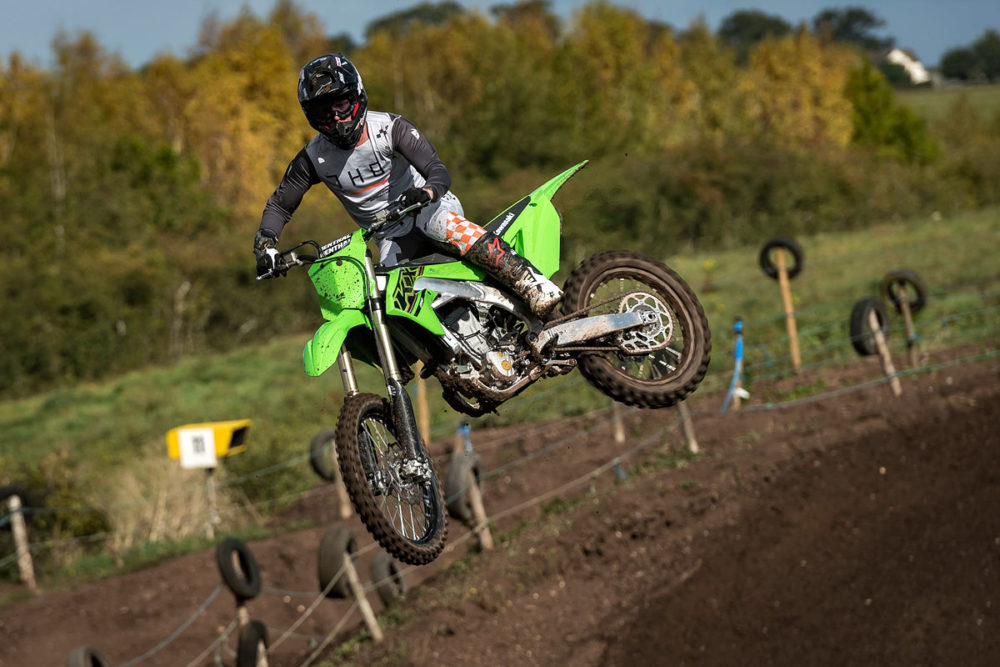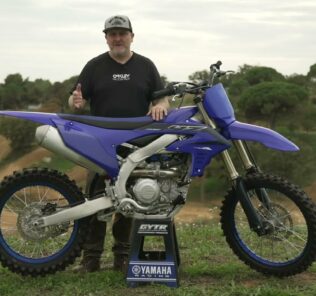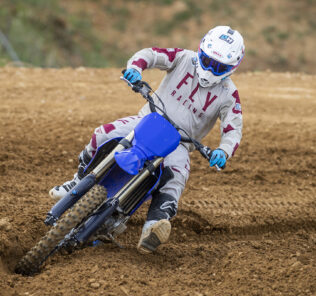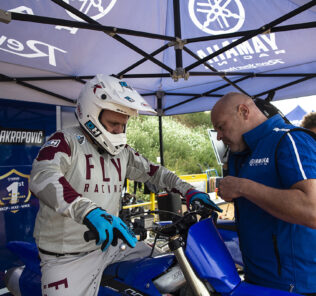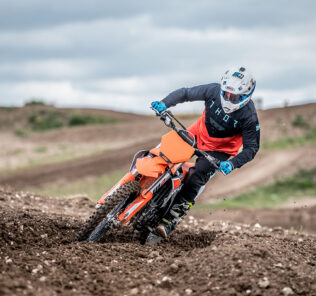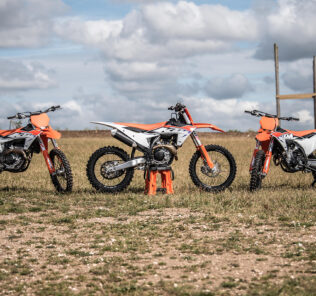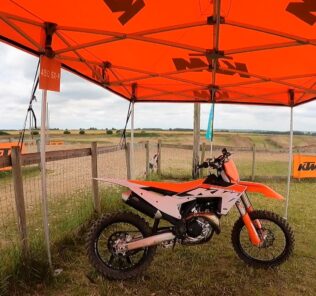2021 Kawasaki KX250 – Test Ride, first look and new features!
It’s finally here. That magic little button that has been missing from the KX250 has arrived and is most definitely welcome. The 2021 KX250, you’ll be pleased to know comes with an electric start, but that’s not the only selling point and certainly not the biggest. The new model is very much that, pretty much a new bike from the ground up. The KX250 has now come of age like it’s big brother, the KX450, and been given the same upgrades and definitely gone from young lad to man.
Test Rider Dylan Woodcock – Images courtesy of Nuno Laranjeira
The upgraded KX450 certainly hit the ground running and there’s everything here to suggest the new KX250 will follow suit. There was talk in the industry that this bike was coming for 2020 but it didn’t materialise. Kawasaki didn’t rush it and it’s been worth the wait. The 2021 KX250 is faster, lighter, leaner. Many things have changed on the new model and we glad to report that they’re all for the better. It’s plain to see a lot of R&D and development has gone into this bike and the Kawasaki engineers have worked hard with their race teams and test riders to make significant gains on what was already a really good, all-round well-balanced bike.
We could write a details essay on all the technical changes, the type you’d be proud of if you were doing a university dissertation, but let’s be honest none of us have the time for that, what it actually performs like is the most important thing. So let’s go through the improvements without going into too much ‘anorak’ style details and try and explain how those upgrades have improved the performance of the bike.
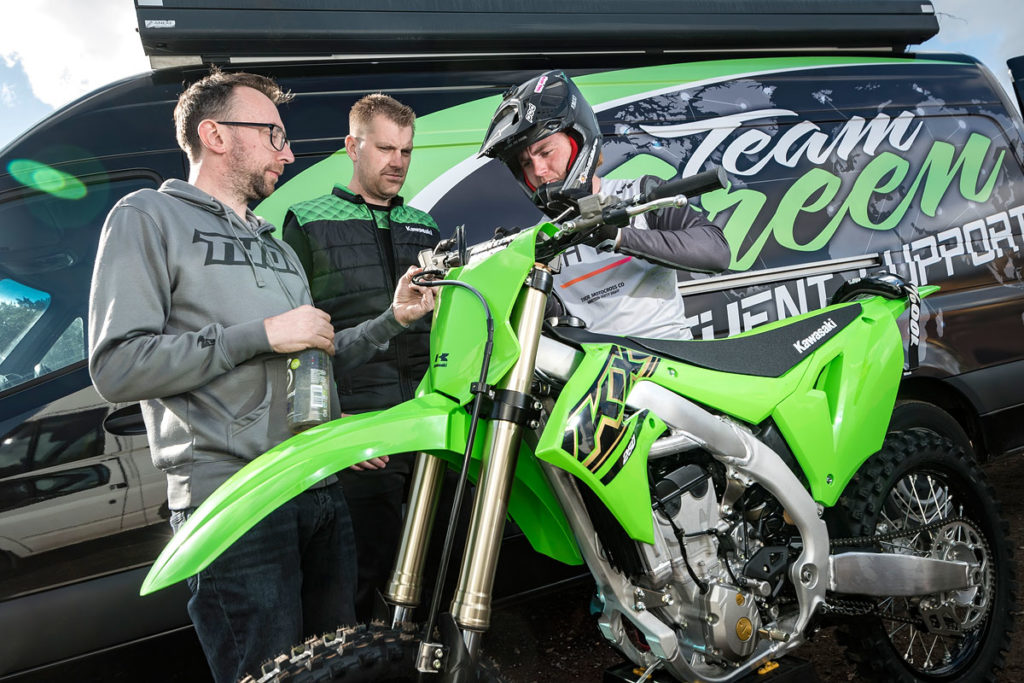
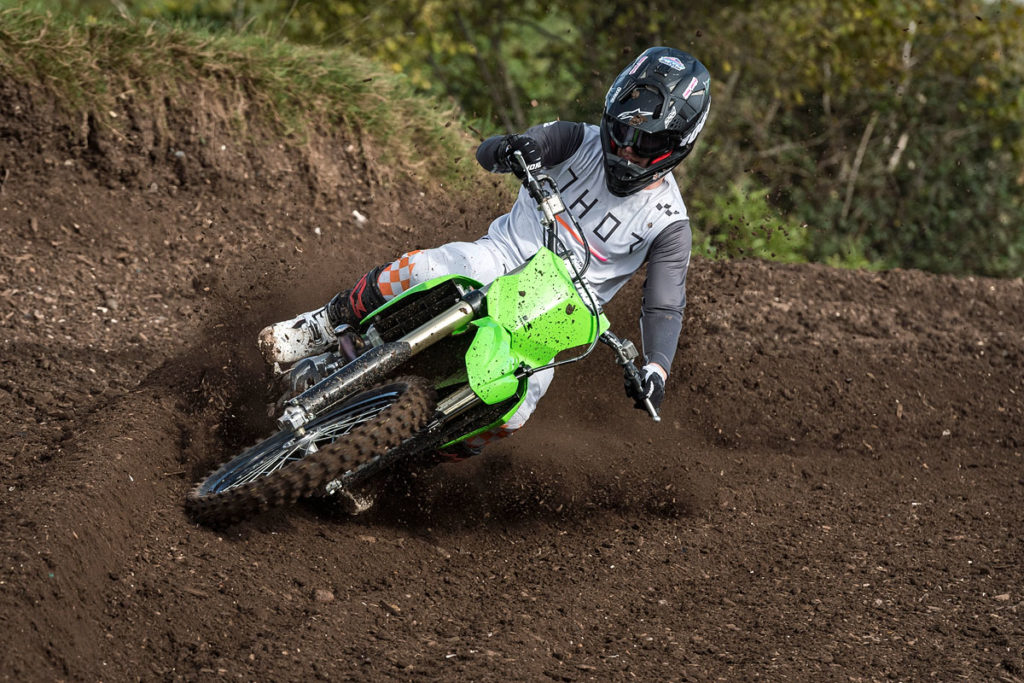
The KYB suspension definitely feels better from the get-go and ready to get out there and hammer the track harder. Of course you could argue that’s not so good if you’re an amateur rider, but that’s not the case. Yes, it feels firmer and it is, but it’s across the stroke of both front and rear and has a good progressive feel. All levels of rider will feel more comfortable on this bike we’re sure. The 48mm coil spring forks make good use of the 25mm damping pistons. There’s definitely a noticeable improvement on the front end of the 2021 KX250. It inspires more confidence to push it into the corners under braking. The new lower position of the bottom triple clamp no doubt helps with that, it’s lighter too.
On the rear there’s a new suspension linkage that gives a longer stroke and therefore more precise rear shock tuning. The linkage is the same as the KX450 and with good reason, because it’s good and proven already. The KYB shock features dual compression adjustment so that you can tune high and low speed damping separately. Like the forks the stock settings are firmer and are well balanced and the Kashima coat on the tank cylinder is a nice touch to help with wear abrasion and give a smoother action. All this goes in helping the new KX250 feel plush and well balanced in it’s handling out on track. It definitely feels like you can push on more on this bike compared to the 2020 model, in fact it almost encourages it. With the lighter and slimmer feel you can definitely throw it around and be more aggressive with it if that’s your thing.

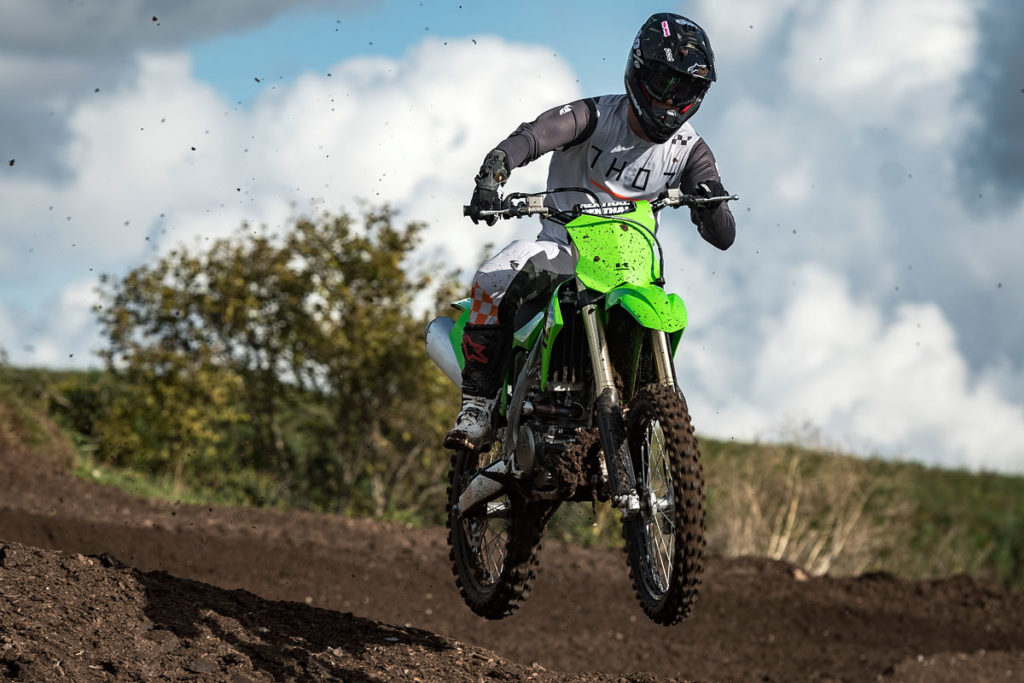
Here, let’s do our best to explain what those changes feel like out on the track. The simple version is it has more oomph off the bottom out of corners and then as we’ve already mentioned it revs faster and for longer. The upside of that is that it opens itself up to be a better bike for all levels of riders. If you’re a bit of revving Rodney you can do that to your heart is content, to a degree of course, there’s only so much any bike can take being constantly over revved. What we mean is that it just doesn’t top off on the power range as early as the 2020 model does and that’s a bonus. There’s always some part of the track that you want to attack where you’re right between gear changes. Like when you come to a jump out of corner for example and you want to seat bounce over it and the take off is right where you need to change gear to get the most of out the bike. We always find that frustrating because let’s face it, you don’t really want to be changing gear on the take off of a jump, especially when you’re seat bouncing. We all know what will happen there if you miss a shift! So in that circumstance alone the 2020 KX250 is much better, along with everywhere else out on track.
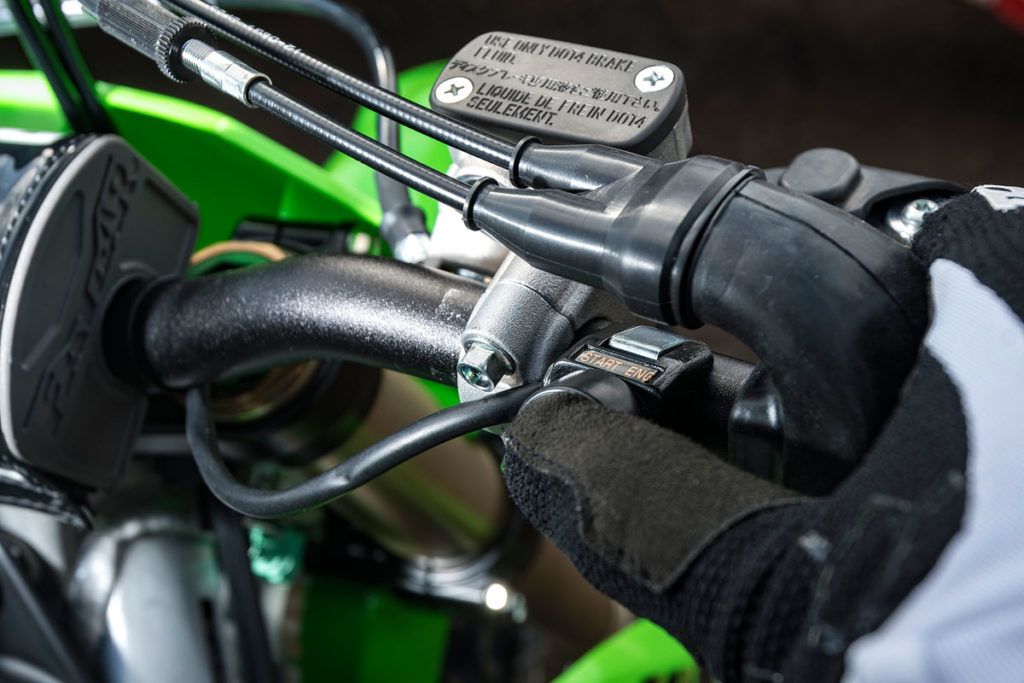
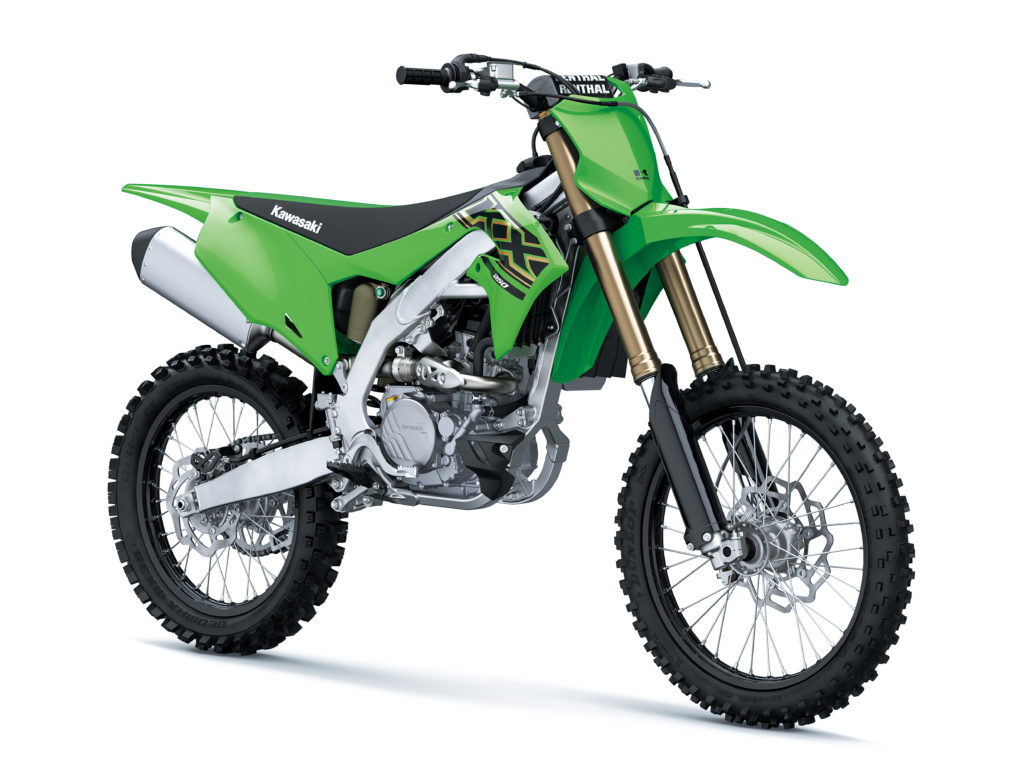
All said and done there’s no doubt the 2021 KX250 is a much-improved model on the 2020 bike. In this world of modern technology and bike development bikes improve every year, sometimes only a little bit, but improve all the same. This bike is a big step forward for Kawasaki in the division just like the KX450 was before it. It was worth waiting another year for. And oh yeah, it’s got an electric start, did we mention the electric start?
What’s new?
- Electric Start
- The new engine boasts an increase in peak power of approximately 1.0 kW (1.4 PS), and the rev limit increases a further 350 min-1 to 14,500 min . A significantly more robust low-mid range is complemented by strong high-rpm performance that gives riders an advantage on the straights, and, when combined with a higher rev limit, makes it easier to tie corners together for quicker lap times.
- Complementing the aggressive cams, large-diameter intake (ø32 mm) and exhaust valves (ø26.5 mm) with high lift (IN: 10.3 mm; EX: 9.1 mm) flow a high volume of air, contributing to high-rpm power.
- Revised processing for the throats of the intake and exhaust ports (IN: revised angle, larger diameter; EX: larger diameter) contributes to the increased performance.
- Finger-follower valve actuation also enables a lighter valve train mass (IN is 3.5% lighter; EX is 4.3% lighter) compared to a tappet-style valve actuation (even taking into account larger-diameter valves that finger- follower valve actuation allows).
- DLC (Diamond-Like Carbon) coating on the finger followers helps protect against wear.
- Revised exhaust cam timing (retarded 3°) contributes to the engine’s increased performance.
- The camshafts benefit from a thin and highly durable gas soft-nitriding treatment for long wear and high-rpm reliability.
- Valves are formed from lightweight titanium, reducing reciprocating weight and offering high-rpm reliability.
- Valve springs feature a higher spring rate to match the higher rev limit.
- Downdraft-style intake routing allows a straight approach for intake air into the cylinder. The 32.5° approach angle contributes to cylinder-filling efficiency and overall engine power.
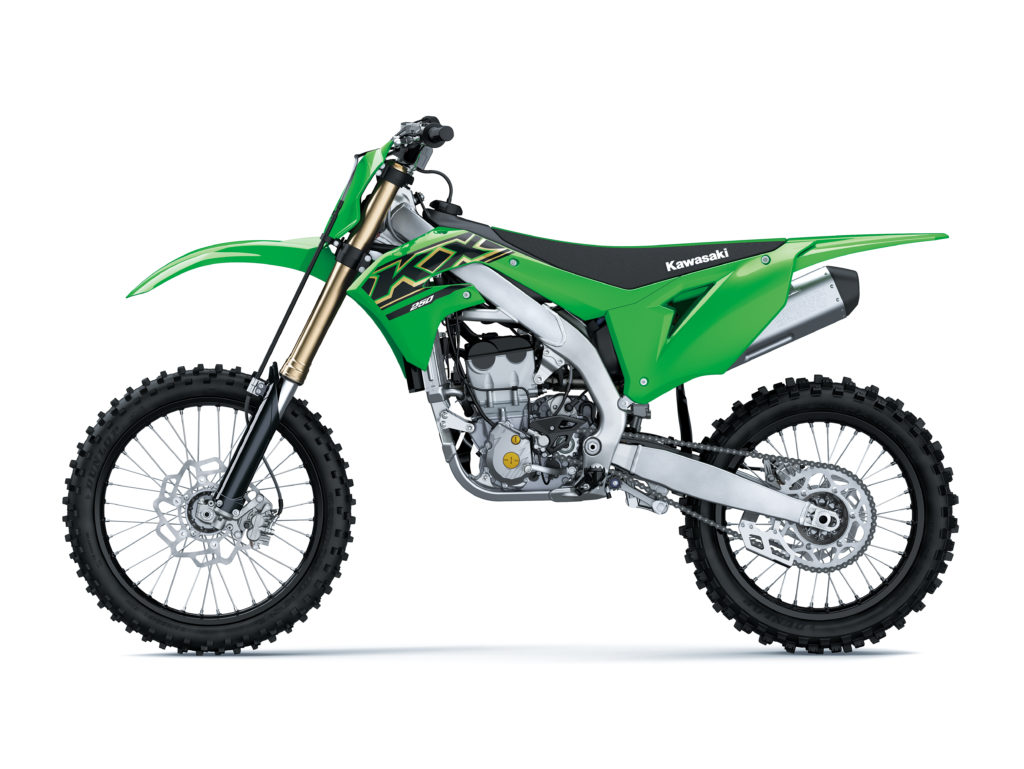
- Large-diameter ø44 mm throttle flows a great volume of air, contributing to high-rpm performance.
- The KX250 was the first production motocrosser equipped with dual injectors (a feature since 2012): an injector downstream of the throttle valve (where injectors are located on standard FI systems), tasked with delivering smooth, instant response; and a second, upstream injector located close to the airbox, which makes a significant contribution to engine output at high rpm.
- Unlike the dual injection found on supersport models (where the upper injector operates only part-time, providing additional fuel when necessary), the two injectors in the KX250 fuel injection system have different roles. The downstream injector is used to ensure smooth, instant response while the upstream injector is charged with providing power. As rpm and throttle position increase, primary operation switches from the downstream injector to the upstream injector.
- Revised combustion chamber design and a flatter piston crown contribute to the increased performance.
- High-performance piston, featuring the same design used by Kawasaki factory racers, contributes to strong performance at all rpm. A short skirt, reinforced external ribs and the use of a bridged-box bottom, featuring internal bracing, contributes to a light, strong piston design. A dry film lubricant coating on the piston skirts reduces friction at low rpm and helps with the piston bedding-in process.
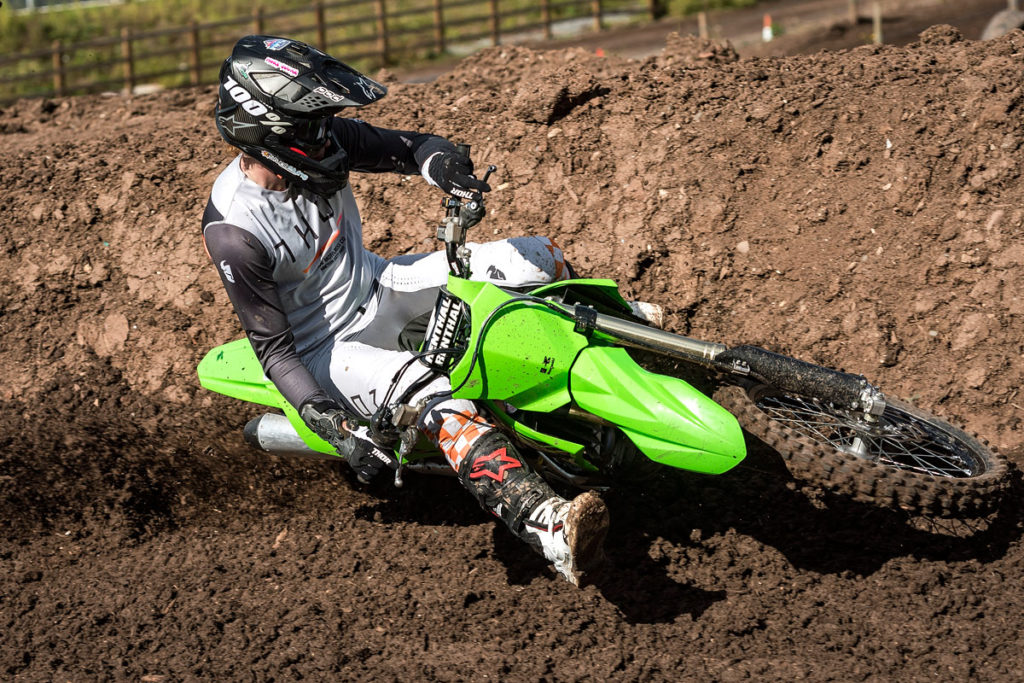
- Connecting rod is 3 mm longer. The decreased lateral force on the cylinder walls as the piston moves up and down helps to reduced mechanical loss. (Cylinder height increased accordingly.)
- Cylinder is offset 3 mm (forward), reducing mechanical loss, which also contributes to stronger engine performance.
- Plateau honing on the cylinder bore results in a smooth surface with good oil-retention. The smooth surface helps reduce mechanical loss, contributing to engine power.
- Revised crankshaft web design offers reduced weight.
- Revised pressure balance inside the crankcase contributes to the increased performance.
- Like the KX450, a hydraulic clutch offers direct feel and light lever action. Less play as the clutch heats up during heavy use results in more consistent feeling. The use of coned-disc springs contributes to lighter clutch actuation when the lever has been pulled in, and a wider clutch engagement range, which facilitates control (especially when half-clutching). Friction plates with offset (slightly rotated) segments promote clean separation of the discs and help to reduce drag when the clutch is pulled in. The clutch’s slave cylinder is common with that of the KX450.
- Axle spacing revised in order to strengthen the transmission to match the increased engine output. Along with matching the revised axle spacing, shape-optimised gears contribute to weight reduction.
- New frame offers a better overall rigidity balance. While many parts are common with the KX450’s frame, the cast parts (like the shock tower mount and engine hangers) were designed specifically for the needs of the KX250.
- Engine is used as a stressed member, contributing to the frame’s rigidity balance.
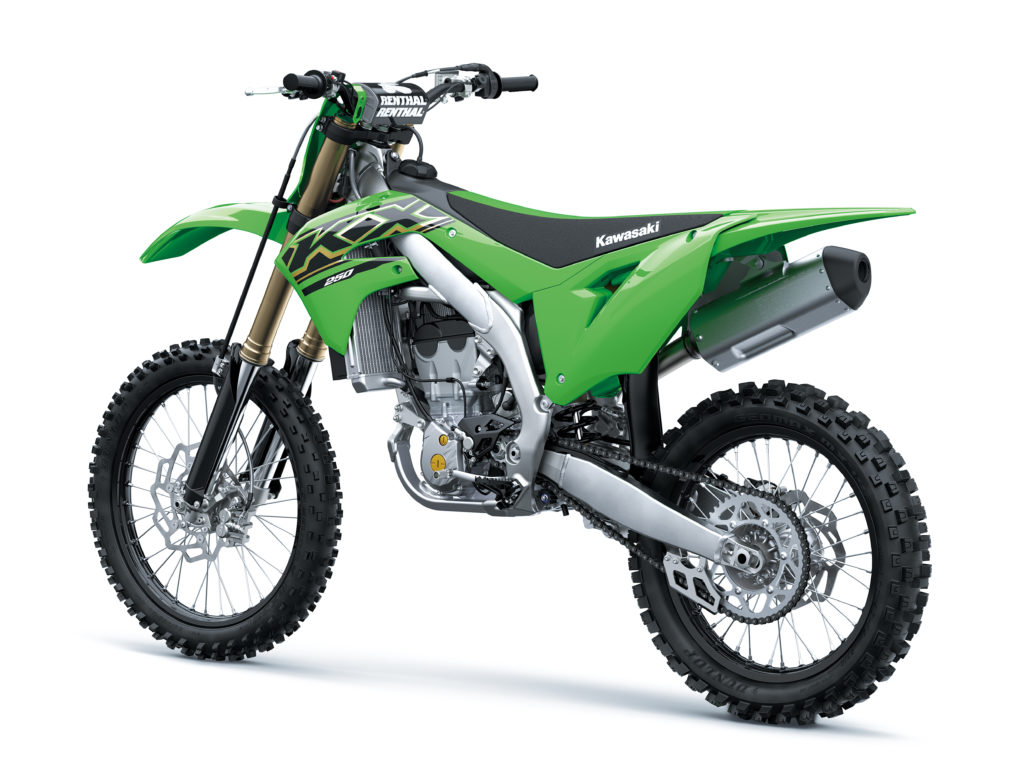
- Steering head area with optimised rigidity, main frame rails with revised cross-sections, and a revised line for the swingarm brackets contribute to the overall rigidity balance. Wider lower frame rails also contribute to overall rigidity balance.
- KX450 swingarm delivers the rigidity to match the frame, and contributes to increased rear traction.
- Lower triple-clamp with revised rigidity reduces weight while contributing to the front’s ability to absorb bumps.
- The New Uni Trak rear suspension system mounts the suspension arm below the swingarm, allowing a longer rear suspension stroke. The longer stroke in turn allows more precise rear suspension tuning.
- Revised linkage ratios (same as those used on the KX450) contribute to both increased absorption and damping performance.
- The KYB rear shock features dual compression adjustability, allowing high-speed and low-speed damping to be tuned separately.
- Kashima Coat on the tank cylinder helps prevent wear abrasion, and reduces friction for smoother suspension action.
- Front and rear suspension settings fine-tuned to match the new frame contribute to increased bump absorption performance as well as increased traction.
- KX450 front master cylinder adds to the high level of control and overall feedback from front brake.
- A smaller-diameter rear disc (ø250 mm >> ø240 mm) offers performance optimised for the KX250, contributing to controllability.
- Factory-style ø28.6 mm (1-1/8”) Renthal aluminium Fatbar, a popular aftermarket part, is now a standard feature. The thicker handlebar helps reduce vibration and shocks transmitted to the rider, while the new grip position (19 mm lower, 8 mm closer) helps put the rider in a position that makes it easier to weight the front wheel.
- Bodywork designed to facilitate rider movement features long, smooth surfaces that make it easy to slide back and forth.Seams between the shrouds, seat and side covers are very flush, which facilitates control as well as moving around on the bike.
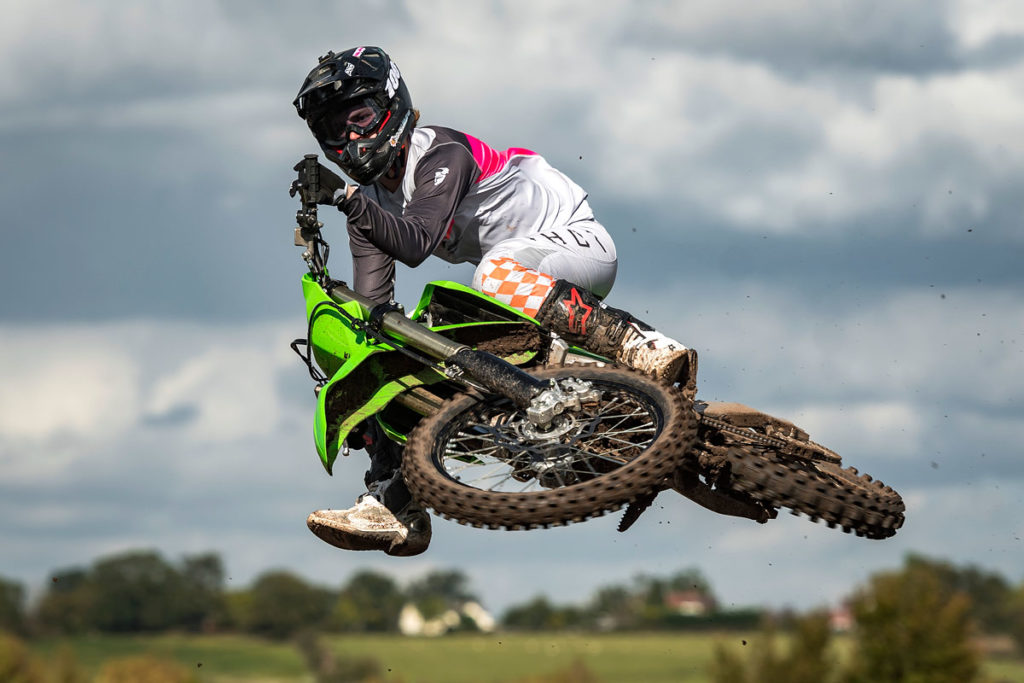
- Revised design for the top of the fuel tank top allows an even flatter progression from the seat to the tank. The flatter design gives the rider greater freedom of movement when changing riding position, and facilitates sitting farther forward.
- The seat uses a slip-resistant top surface for good grip when seated and smooth sides for excellent rider mobility. Seat urethane helps maintain the original shape longer.
- Slimmer shrouds are positioned closer to the frame. Designed to be slim where they come in contact with the rider’s legs, the new single- piece shrouds facilitate grip.
- The frame widens at the ankles to offer the rider better grip and narrows near the bend below the seat to allow a slim riding position. Smooth engine covers were also designed not to impede rider movement.
- Adjustable footpeg brackets enable riders to lower their footpeg position 5 mm. In the lower position, centre of gravity is lowered as is the rider’s point of view.
- Gold finish on the oil cap and the two plugs on the generator cover further contribute to factory-racer looks.






